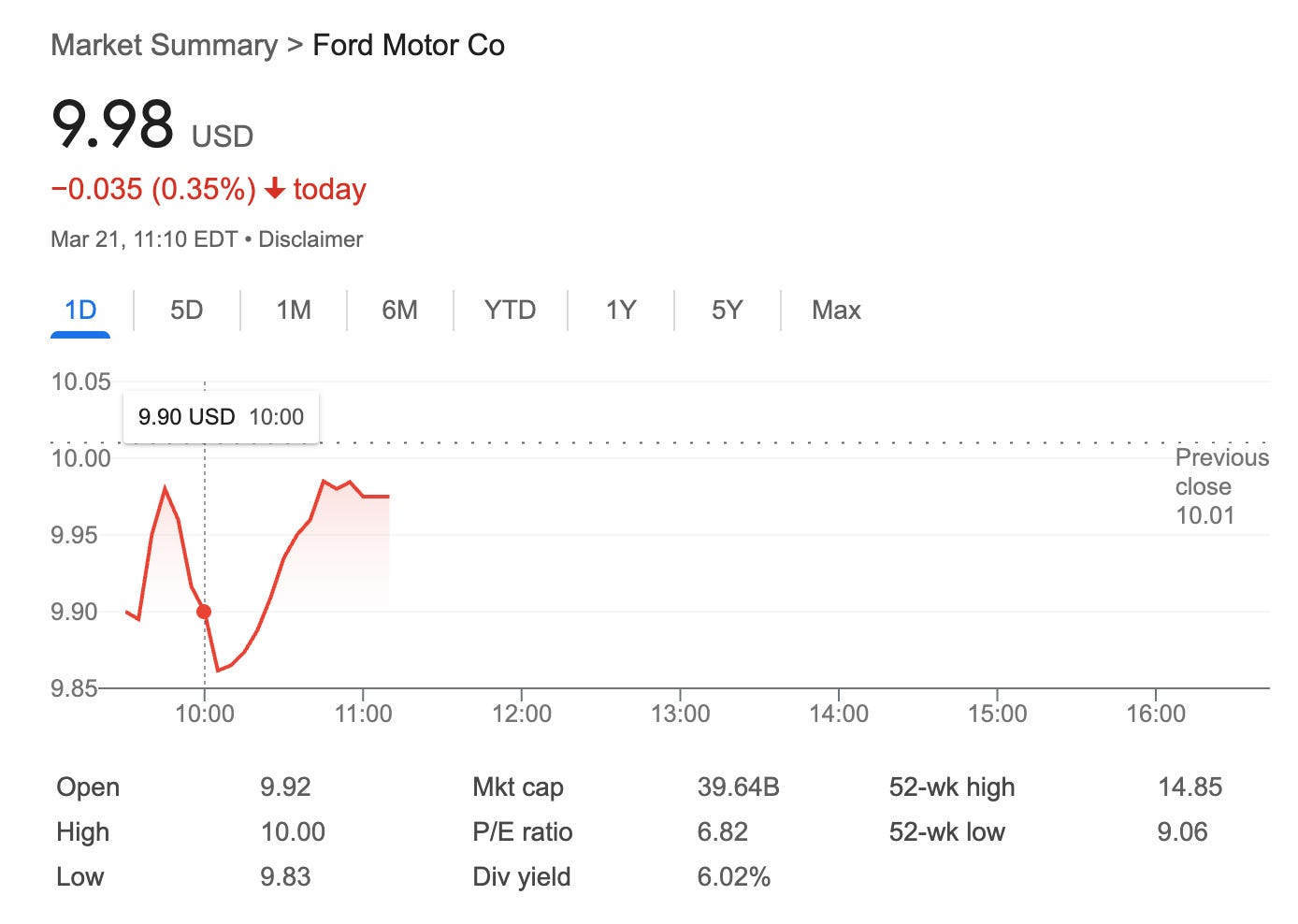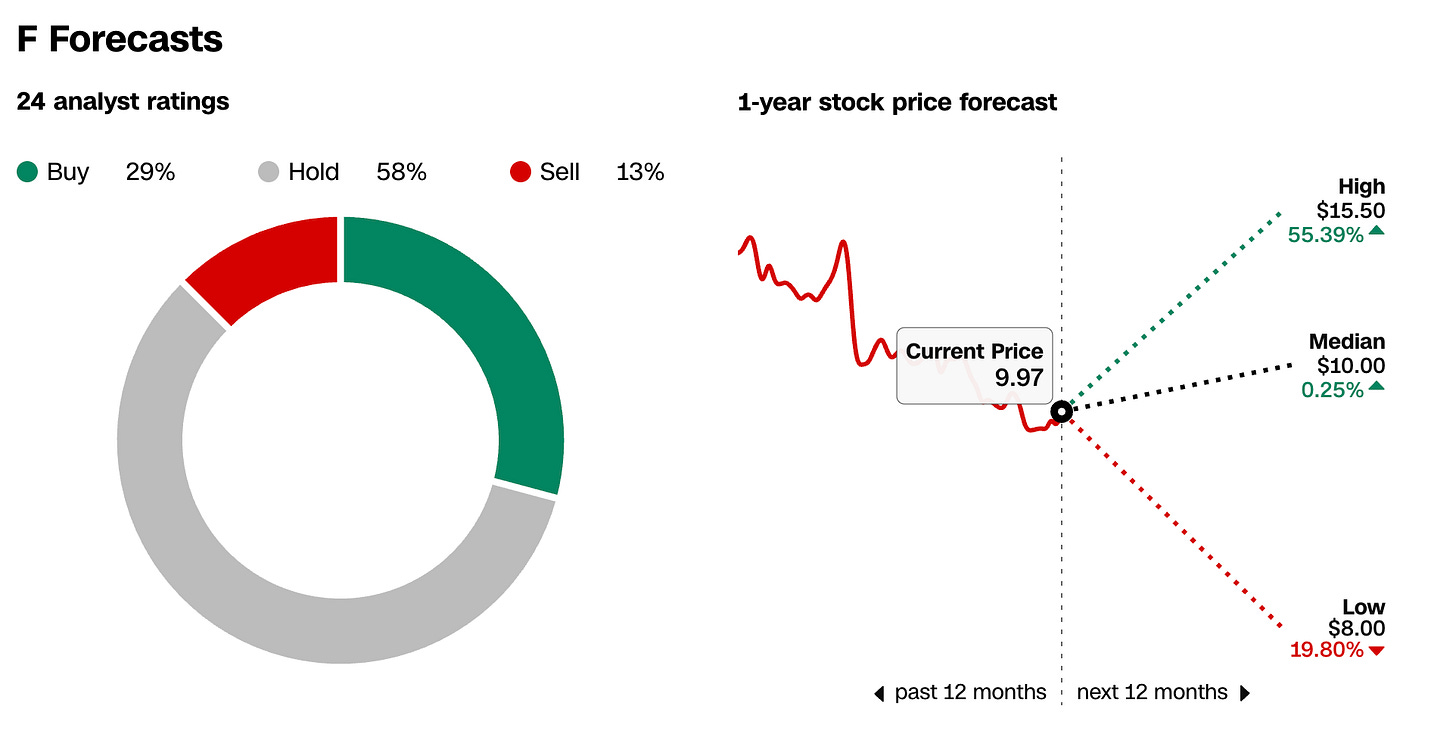Ford Stock and Covered Calls: A Winning Combo for Dividend Investors?
I’ve been holding 100 shares of Ford since the summer of 2023, when I got assigned at $14 per share after selling a put option. My initial cost basis was $14, but since then, I’ve been selling covered calls against this position. Over the past 20 months, I’ve collected $165.56 in premiums—equivalent to $1.65 per share. This has lowered my break-even price to $12.35, slightly above my latest strike price of $10.50 for a call option expiring May 2, 2025. If I factored in the dividends Ford pays—which I haven’t calculated here—my break-even would be even lower.
Ford has been a steady performer for me. Its dividend yield, currently around 5-6% depending on the share price, provides a reliable income stream, and the premiums from covered calls add a nice bonus. However, with just 100 shares, the income isn’t transformative. Scaling up my position and securing a lower entry price could unlock more potential from this strategy.
Ford Stock Performance: A Deeper Dive
As of March 21, 2025, Ford was trading at approximately $9.98, down from its 52-week high of $14.85 but above its low of $9.06.
The company’s market cap is around $39.64 billion, with a price-to-earnings (P/E) ratio of 6.82—indicating it’s undervalued relative to its earnings.
Ford’s latest Q4 2024 earnings showed adjusted earnings of $0.39 per share and net income of $1.8 billion, beating expectations.
However, the company’s 2025 guidance was more cautious, projecting adjusted EBIT of $7 billion to $8.5 billion, down from $10.2 billion in 2024. This reflects challenges like lower pricing and a tough Q1, though Ford’s “Pro” fleet business ($9 billion in 2024) and “Blue” operations ($5.28 billion) remain strong. The electric vehicle “Model e” segment, however, posted a $5.08 billion loss.
Analysts see long-term potential in Ford, with projections suggesting a climb to $19.91 by 2026, driven by EV growth and operational efficiencies. The company aims to cut $1 billion in costs in 2025, and its dividend yield keeps it attractive for income investors. Still, short-term risks like EV losses and economic pressures linger.
Why Covered Calls Work with Ford
Covered calls are a natural fit for a stock like Ford, which offers moderate volatility and a solid dividend.
By selling calls against my 100 shares, I’ve reduced my cost basis by over 11%—a win in my book. My latest trade, a $10.50 strike expiring May 2, 2025, reflects a conservative approach. With Ford at $9.98, it’s out-of-the-money, giving the stock room to rise while locking in a profit if it’s called away.
That said, 100 shares limit me to one contract at a time. A larger position—say, 200-300 shares—would let me sell multiple contracts, diversify strike prices, and boost income. A lower entry price during a dip below $9 would sweeten the deal further.
Ideas and Recommendations
Scale Up: A bigger position amplifies premium income. With Ford’s current price near its low, adding shares could pay off.
Buy on Dips: A sub-$9 entry would improve my cost basis and make covered calls more lucrative.
Blend Income Streams: Reinvest dividends into more shares while using premiums for cash flow.
Strike Selection: Out-of-the-money strikes like $10.50 or $11 balance premium income with potential upside.
Analysts rate Ford a “Hold,” with a 12-month target of $12-$13. Its undervaluation and dividend appeal are strong, but EV struggles and macro risks temper enthusiasm.
I’m neutral on Ford. I’m fine keeping it in my portfolio, collecting dividends, and selling calls for extra income. If it gets called away at $10.50 in May, I’m okay letting it go. This year, I’m focused on building my portfolio with NVIDIA (NVDA) stock, which I see as a high-growth play in AI and tech.
That said, I wouldn’t mind adding a few hundred more Ford shares if the price drops, boosting my covered call returns and anchoring my holdings.
I offer individual coaching to help you master covered calls. From picking strike prices to timing expirations, I’ll walk you through the process tailored to your goals.
How to Generate Income with Covered Calls (Coaching Session)
Ford stock, with its dividend and options potential, is a compelling case for covered calls. It’s not about chasing big wins—it’s about steady gains. My $1.65 per share in premiums and lowered break-even prove the strategy’s value, even on a small scale. Whether you’re a seasoned investor or just curious, Ford and covered calls might be worth a look—especially if you can snag it at the right price.




